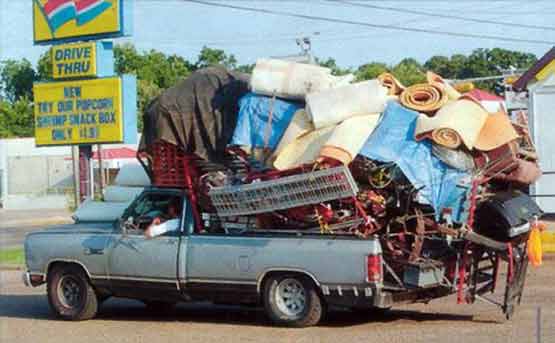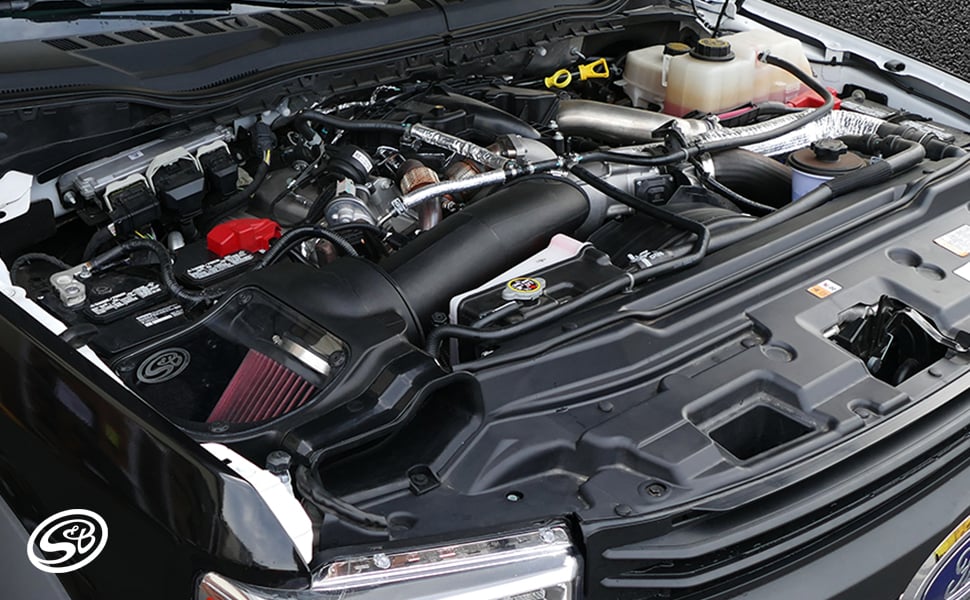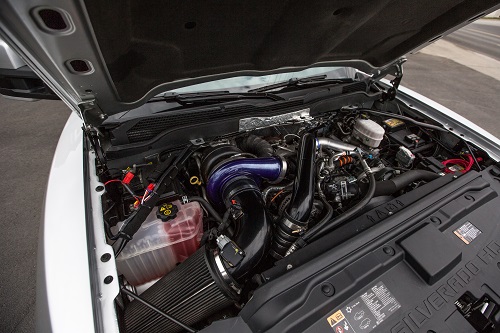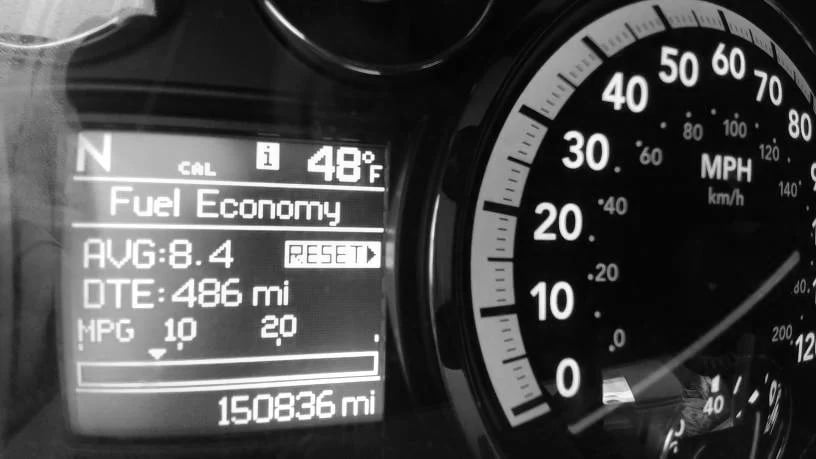Typically, when a vehicle is modified for more horsepower, the tradeoff is a loss in fuel mileage, and that can really take a toll on your wallet if you daily drive your hot rod. While there’s nothing quite like the sound of a big-block Chevelle rumbling down the highway and tearing up the streets, the daily stop at the gas station will make you want to trade it in for a Tesla. In general terms, gasoline fuel is only around 20 to 30% efficient, meaning the majority of its potential energy is wasted and turned into heat rather than horsepower, but diesel fuel is different. Instead, it is able to convert between 40 to 50% of its energy into motion, which means you can drive further for every gallon of fuel. Because of their much higher compression ratio and turbochargers, diesel engines are also known to produce greater amounts of torque than their gasoline counterparts, and this is why they are so popular in the heavy-duty pickup truck market. Diesel fuel allows you to have a truck which is remarkably efficient, especially when considering their size, weight, and (lack of) aerodynamics.
As auto enthusiasts, we are rarely able to settle for a vehicle being stock, and even though most diesel trucks come from the factory producing well over 900 pounds of torque, there are still significant gains to be had if you know how to extract it. With a high displacement gasoline engine, massive gains in power and torque do come with a trade-off of worse fuel economy, but the best part about modifying a diesel truck is as the power increases, so does its efficiency (to a point). If you play your cards right, you could have a 500 horsepower 3/4 ton rig which still gets 20+ MPG.
Right Tool for The Job
Size and weight are a huge factor when determining the fuel efficiency of any vehicle, so starting with the right truck for your needs can make a huge difference on your weekly fuel bill. While an F-450 dually might sound like a really cool truck, unless you need enough payload to move the Statue of Liberty, you may want to reconsider driving such a large and heavy vehicle. Also, be honest with yourself about whether you really need a four-wheel drive truck, as the 2wd versions will always get better mileage since they are lighter, closer to the ground, and have less parasitic loss in the drivetrain.
If all you need is to be able to take a few hay bales out to the pasture or haul your dirt bike to the track, a compact truck like a Chevy Colorado with the LWN 2.8 Duramax or an F-150 with the 3.0 Powerstroke are a great starting point, since they can hit almost 30mpg in real world driving. Compact trucks are great as an efficient commuter, but there isn’t a ton of aftermarket support in terms of ultra-high performance. As far as the ¾ ton trucks are concerned, mileage ratings vary from brand to brand, but the Cummins powered Rams do generally take the lead in fuel mileage comparisons. If you don’t mind an older truck with a few hundred thousand miles on the odometer, the 5.9 common rails are proven performers for mileage, and the even older 5.9 mechanically injected trucks also do very well, especially since they weigh much less than modern trucks.
What Not to Do
Before we dive into the many ways to increase efficiency, first we should talk about what will hurt mileage, as there are many things which you might not even think about, and first is adding weight. Whether it be extra rotating mass from larger wheels and tires or static weight like off-road bumpers, winches, toolboxes, or auxiliary fuel tanks, every extra pound you have to carry around will cost you a little more at the pump. Even small changes to the aerodynamics of the vehicle can have an impact, and things like off-road lights, toolboxes, ladder racks, or even flipped up tow mirrors can make a slight difference, because the greater the drag, the more fuel you need to burn just to maintain cruising speed. Of course, some of those accessories are necessary depending on how you use your truck, but just be mindful about any unnecessary weight you might be lugging around. One more thing you might not think about is the rolling resistance of your tires. As awesome as those 375mm Trail Grapplers look, if you took 100mm of tread width away and ran with a stock 275 tire, the much smaller contact patch will reduce drag and increase mileage. Also, be mindful of the tread design you choose. Super Swamper Boggers look cool and are very capable off road, but the chunky treads will burn more fuel. Instead, an all-terrain tire like a BFG A/T will be much quieter, use less fuel, all while still being capable off the highway.

Finally, slow down. The RPM (and MPH) at which you operate your truck will greatly influence how much or little fuel it burns, and there is one way to tell which speed is best (and it’s not 85mph). Every diesel truck should have a pyrometer installed, as the temperature of the exhaust gas can tell you many different things. Ideally, your EGT under steady state cruise should be low as possible, hopefully somewhere between 6 and 700 degrees F. There is no magic number to shoot for since the location of the sensor will vary from truck to truck and each engine combo is different, but as a rule of thumb, the lower the EGT, the better the mileage and here’s why: if the engine is operating outside of its peak efficiency zone, all the fuel injected during the power stroke isn’t able to be burned before the exhaust valve opens, so it will continue to burn as it enters the exhaust where it provides no contribution to the propulsion of the vehicle and raises the temperature of the exhaust gas. The elevated temperatures are a clear sign of un-burnt fuel and wasted efficiency, so just keep an eye on your pyro and make some notes about what MPH has the lowest EGT’s and if you can manage to keep your foot out of the throttle, that should be your ideal fuel mileage speed.
Inherent Limitations
With all the groundwork laid, let’s talk about how we can modify a diesel truck to get better fuel mileage. As stated earlier, as horsepower is increased, efficiency goes up as well, but to be clear, there is a practical limit. If you try and push things too far with garden hose sized injectors and an 80mm single turbo, your mileage will sink faster than a brick. Additionally, when modifying your truck, be mindful about the limitations of the platform you’re working with. While there are plenty of 2nd gen Rams hitting low to mid 20mpg with less than 400 ponies, don’t expect a mechanically injected truck to score high on both mileage and horsepower, since there are tuning limitations of a mechanical pump, like fixed injection timing and lower overall injection pressure. Common rail trucks run much higher injection pressure which atomizes the fuel into smaller droplets which are easier to burn, plus you can dial in the timing over the entire RPM range, unlike a mechanical truck which has fixed timing.
The Big Three
We’ve been over this many time before, and the first upgrades to any truck should be done as a set of three: intake, exhaust, and tuning. For the purposes of our discussion, we’ll use a 2004.5 to 2007 Ram with the 5.9 Cummins since it’s one of the most popular platforms out there, but the same concepts can be applied to any model of truck. The first round of modifications should always include a cold air intake which will flow a greater volume of air than stock, allowing cooler, denser air into the turbocharger. On the opposite end of the turbo, a 4” exhaust will allow the spent gasses to easily exit the engine with minimal resistance, plus it will also give your truck a more aggressive exhaust note. When you free up the airflow pathway both into and out of the engine, your horsepower will go up and your EGT’s will go down, which means you are getting more work done with the same amount of fuel you were burning before, but the real gains come once you can adjust the ECM calibration. For a basic fuel mileage build, a programmer like the Smarty Jr. is a perfect place to start. It will give you a great bump in power and fuel mileage and can add up to an additional 100hp, all while providing the lowest possible EGT’s. Plus, the power delivery and torque management are optimized to make for a fun driving experience.

Shifting Gears
While there’s no question a stock sized tire will be the best bet for great mileage and highway use, often the application of our trucks dictates something different. If you go wheeling with your truck or work in the woods, a 37” or 40” tall tire may be required to get the job done. If you install larger tires with no other modifications, you can expect both your mileage and acceleration to do down. Taller tires will take leverage away from the engine and make it work much harder to accelerate and maintain cruising speed. More work equals more fuel burned.
An easy way to correct this condition is to give your engine extra leverage by re-gearing the differential(s). Stock ratios usually will be 3.42, 3.55, or 3.73, but by swapping to a 4.30 or 4.56, your RPM’s will be back in the sweet spot when cruising, acceleration will be easier, and you’ll get pretty damn close to your mileage before the larger tires were added. If you’re unsure what ratio to choose, some simple math can get you in the ballpark. Just take your new tire diameter and divide it by stock (4032) and multiply that by your stock ratio (3.42) and you’ll get a result of 4.275:1. They don’t make 4.27 gears, but the next closest option is 4.30:1. That will make your truck act like it did when it was stock, or for a little extra spice you can step it up to the next ratio of 4.56.
More Air Density
Once you have the basics taken care of and the engine back at its proper operating RPM, there are additional gains in fuel mileage to be had by further improving air density. Now, parts like a larger intercooler and intake horn, exhaust manifold, and even a (slightly) larger turbocharger come into play.
It’s easy enough to pick the best flowing intercooler, but turbocharger selection can be tricky. In order to gain fuel mileage, it’s important to pick the right size: if you go too big, you’ll have a smoky, laggy truck which is no fun to drive and burns a lot more fuel than stock. A Stealth 64 turbocharger will compliment your existing airflow modifications and work great with stock sized injectors and CP3, but when pushed it can support up to 700hp at the wheels. The relatively small 64mm compressor wheel will provide quick spool up at lower RPM, which is key for fuel mileage. If you tow frequently, another great option is to install a compound over stock turbo kit. This will retain the lightning quick spool up of the stock HE351, but also gives you extra airflow to cool off the EGT’s while towing, racing, or just daily driving. When you do upgrade your parts list to include compounds, a larger single, or even want to step up to a slightly larger injector, you should step up to custom tuning. The ECM needs to understand exactly how the airflow is modeled, and PPEI can write a custom calibration for your 2006 and up Cummins to make sure your ECM understands exactly how much airflow to expect so power delivery is optimized without wasting any fuel.

The Slippery Stuff
You can’t talk about improving fuel mileage without a little discussion about the fuel itself. Clean fuel is obviously important, but there’s more to it than just taking out the dirt, and your stock filtration system won’t cut it. A FASS lift pump will provide the needed volume of fuel for your application, but the real benefit lies on the filtration side of things. Water and dirt are all taken out with a rating of 2 microns, but the biggest gain comes from removing the air which becomes trapped in the fuel. Small air bubbles can cause a slight delay in injection timing, so by flowing nothing but pure fuel into your engine, you’ll have a longer service life with the added benefit of a slight bump in mileage. In addition to cleaning the fuel, you can chemically alter it to help mileage as well. By adding some F-Bomb Hellfire fuel additive into the tank, the cetane rating of the fuel is increased by 8 points which helps to increase (you guessed it) both power and fuel mileage. When you are performing your routine service, consider swapping to a full synthetic fluid for your engine, transmission, transfer case, and differentials. This will reduce friction, increase service interval, run cooler, and give a bump in mileage.
War of Attrition
For the very best fuel mileage, you’ll have to do a combination of bolt-on modifications and a bunch of little things as well, since every little bit adds up. If you plan your build right, you can have a pickup which gets much better mileage than an equivalent gas version, is fun to drive, can tow plenty, and might even win a race or two. And finally, don’t forget about how much impact proper driving habits can have, and don’t go nuts with your warm-up and idle time. In the winter, plug in the block heater overnight, let it idle for 5-10 minutes tops, and then hit the road. It’ll reach operating temp much quicker while driving, which is where your engine is most efficient.


Hot Shots EDT is cheaper treats 400 gal.fuel and does every thing that the F- bomb claims to do. I use it mainly when filling up with less expensive but dirtier Bio Diesel 20 to boost the cetane level to diesel #2 level.
Thanks for the comment and glad you read our blog post. We definitely like Hot Shots EDT, as well, wouldn’t argue that one bit. But to clarify, Hot Shots EDT is $15.95 and yes, does treat 400 gallons, where F-Bomb is $14.95 and treats 500 gallons,both are 16 oz. bottles.
https://www.dieselpowerproducts.com/p-17708-hot-shots-secret-everyday-diesel-treatment-fuel-additive-16oz-squeeze-bottle.aspx
https://www.dieselpowerproducts.com/p-7522-f-bomb-diesel-fuel-additive-fuel-bomb.aspx
F-bomb might treat more gallons but does it offer everything that hot shot secrets EDT has to offer with like water displacement and added labricity for for that expensive CP3 pump. I know that they both boost cetain
Yes sir, it sure does. Standard “F-Bomb” (the original) disperses water, cleans and lubricates the fuel system, prevents algae and bacteria, as well as raising the cetane level a few points. Conversely, “Hellfire” (another line of additive under the F-Bomb name), is intended to ONLY increase cetane, which it does by eight points.
Thanks for the great article. More people need to adhere to this wonderful advice. Thanks
Thanks so much, we appreciate that!
Ram 2017 Cummings 2500